2006 Gibson "V-Factor" Flying V, December 4, 2009
An Art Deco Design Classic Lives Again
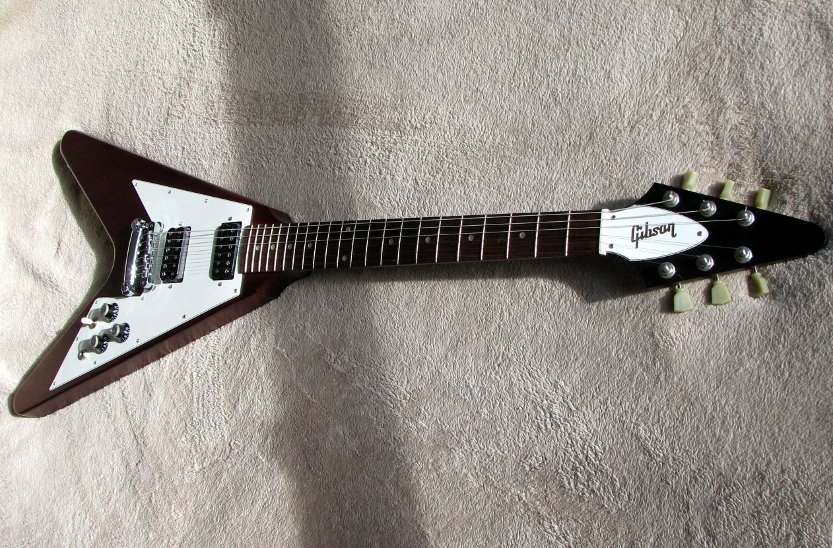
You know, I've loved the Gibson Flying V since about 1974 when I heard Wishbone Ash's Live Dates album and first heard and saw one. Browsing through the album's booklet and seeing Andy Powell with his '67 V, I began to love the art deco look of the thing. Andy got some really cool, spanky sounds with the guitar playing both clean and dirty through Orange amplifiers. It didn't hurt that he was playing some pretty cool progressive music, either.
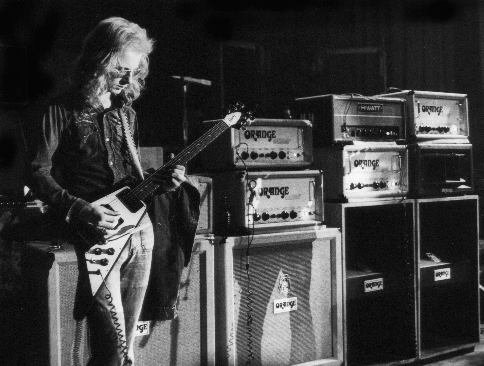
The first, revolutionary model of the Flying V debuted in 1958 but didn't sell very well and the model was dropped by Gibson after two years. The initial few, built in African Limba (Korina) wood, have become among the most-sought and counterfeited vintage guitars. After seven years off the line, in 1967 Gibson reissued the Flying V in mahogany and changed a few other details. For years I tinkered with various versions of the V. From hearing albums, talking to owners, and playing the guitars themselves, I became convinced that they got something very right with the '67 version of the V. Between the sound, the lines, and the layout of the controls, it's my favorite version.
Around 2001 Gibson issued an inexpensive '67 reissue Flying V with a faded cherry finish and moon inlays. In 2003 they renamed it the "V-Factor" and gave it back its round fret markers. Of late, those have begun showing up on the used market for a song. I spied this particular example in a guitar store, across the room, hanging among the sad, used guitars. Despite having lived an active life and picked up some bruises, it called my name. Unfortunately, by the time I decided to plunk down my pesos the next day, someone had come along and put it on layaway. When I went into the store a month later, as I checked out an amplifier, a salesman was in the process of returning the guitar to the wall for sale. It seems the person who bought it changed his mind. On the spot I snapped it up, threw the gig bag over my shoulder, and headed home. It just seemed like it was meant to be.
So, how does it sound? If I were to scale classic electric guitars on the basis of sound from dark to bright, the continuum would be something like Les Paul, ES-335, Flying V, Tele, Strat. The V has much of the sweetness and sustain of the Les Paul and ES335 and the spank of the tele and strat, which makes for a sound of its own. The neck is somewhere between '50s round and '60s thin and very comfortable and it has excellent upper fret access. It sports what appear to be medium jumbo to jumbo frets. The guitar is very light and nicely balanced. It is extremely comfortable to play seated if you place the notch over the left leg, especially if you wear a strap. I took her home and plugged her up and she really came to life on my system. Marvelous. Glorious. Might have corralled a real gem. Now, the pickups are a bit hot. After we did a pickup swap on my son's Epi V, I'm considering replacing the pickups with what he bought: Seymour Duncans, a '59 Model for the neck and a JB for the bridge. And you know, on second look, the guitar wasn't quite as rough as I remembered her from the store. I did need to repair a stripped-out strap button hole, but that was no big deal. All in all, it turned out to be a real pawn shop prize and very affordable.
Oh, and there appear to be lots of these guitars floating around for very reasonable prices.
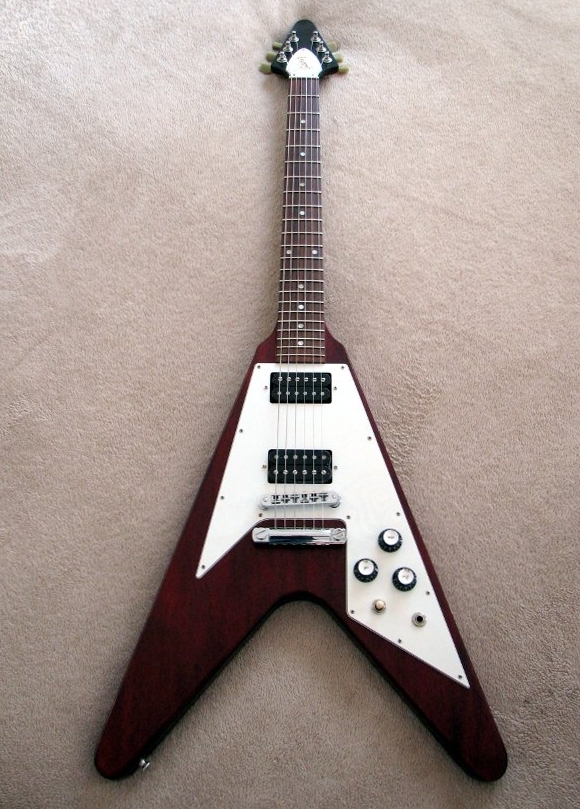
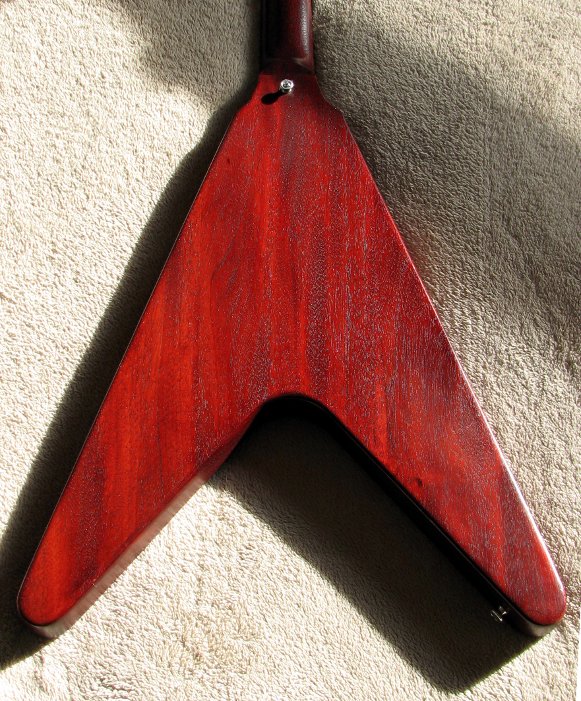
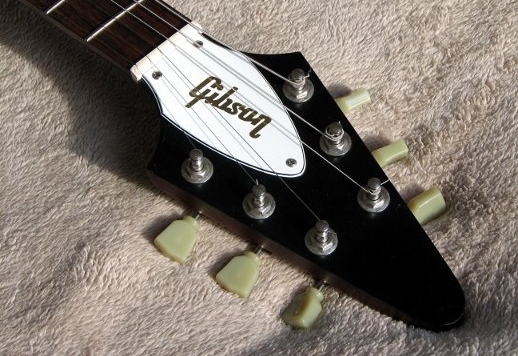

I added period-correct knobs to complete the look. Just because...
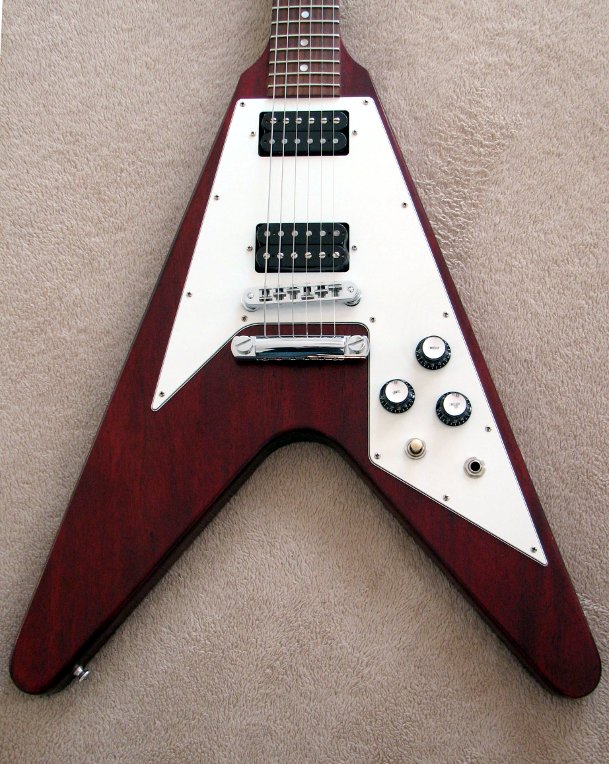
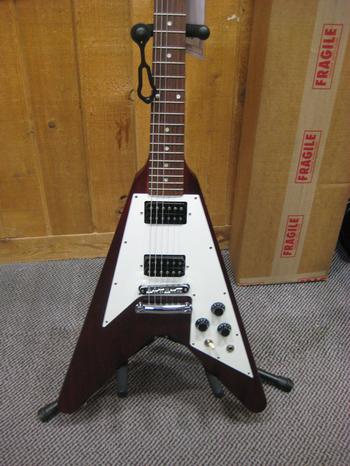
Store photo from the second time she was offered.
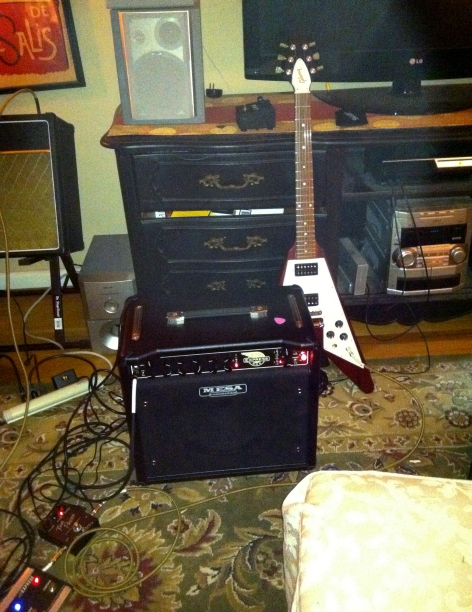
= =
=









